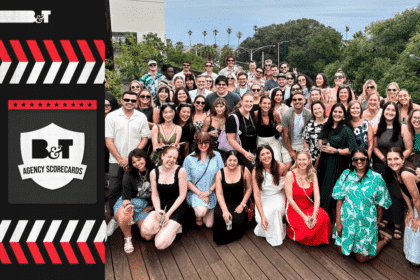In this opinion piece, James Ledger, relationship consultant AUNZ at The Client Relationship Consultancy, explains why agencies should be concerned about transactional drag.
When it comes to your client relationships, Transactional Drag may not be a phrase you’re familiar with, but the feeling almost certainly will be.
It’s something every agency needs to identify, measure, and manage as a vital step towards growth. So, what is Transactional Drag and why does it matter?
‘Transactional Drag’ is a term that pinpoints an increasing shift in the focus of agencies and their clients.
Essentially, it’s a diversion of attention away from relationships towards the functional or operational. It reduces your client and their challenges to a more myopic delivery of service – the current brief over the broader business, immediate clients over future decision makers, today over tomorrow.
The risk is that, left unchecked, it can reduce your client relationship to little more than a transaction, and undermine the crucial management of relationships as distinct from the work.
Transactional Drag matters because it’s bad for business. It inhibits long-term relationships and long-term vision. It reduces agencies to suppliers, rather than strategic advisors. And it reduces the longevity of client relationships, compromising the quality of work and
challenging talent retention.
How do you know if you’re suffering from Transactional Drag?
There are three warning signs to look for.
Warning Sign #1: What’s your client’s narrative of you? How might your clients spontaneously describe you as an agency?
Is the first thing they mention the ‘what’ of the work, like the deliverables, timelines, projects, or ways of working? Or would they focus on the ‘how’ – how it feels to work with you; your alignment to their goals; the passion and commitment of your people and teams; and how invested you are in achieving success with them? If it’s biased towards the former, you should be looking to develop a closer bond with your client.
Warning Sign #2: How does your client behave around you?
How and when do your clients ask for your perspective? Are you frustrated by their lack of openness or transparency when it comes to
information about them that you would find useful?
Are members of your client’s teams emotionally open, inviting you into their inner circle on critical matters, or are they purely transactionally driven? If your clients are focused on what you can deliver for them and when, then it’s likely you’re drifting into Transactional Drag territory.
Warning Sign #3: What is your own team’s mindset?
Does your team suggest that it’s purely the work that defines success? That if the work is good, the relationship will be too?
Review your team’s account plans. Are they full of tactical work fixes around what you deliver, such as short-term solutions to operations and ways of working? Or are there actions that specifically aim to build the relationship, to foster a feeling, spirit or experience you know to be important to the client’s business and your desired outcomes? If the focus is on the work, well, it might have won the pitch, but it’s often the relationship that loses the business. What can you do to course correct? Here are a few simple fixes to mitigate the impact of Transactional Drag.
Fix #1: Diagnose the root cause.
Review your client relationship. Is the client’s organisational culture the cause of the Transactional Drag you’re experiencing? Is the treatment of the agency that you’re a supplier and nothing more? What can you do to foster a sense of partnership? And review your own team. How might their actions be unintentionally contributing to these issues?
Fix #2: Invest in ‘non-task’ time.
The growth of remote working has fundamentally changed how businesses maintain relationships as it’s pushed many to be more transactional. How many of your client meetings or interactions are status, agenda or work driven, as opposed to in service of the
partnership? Consider ways you can reasonably move your client interactions away from on-screen to in-person or ‘non-task’ driven. You’ll understand your clients at a deeper level and engage with them in a more empathetic way.
Fix #3: Leverage empathy.
Empathy maps can be a powerful tool to help you better understand what your clients need and want from their business relationship with you. They’re detailed one-pagers filled with everything that contributes to your client relationship – their goals and motivations, the things they say and do, and what they hear from you. You can use insights from the empathy maps to create a compelling, empathetic client experience.
Fix #4: Write a relationship to-do list.
To-do lists, by their very nature, are transactional.
However, relationship to-do lists are grounded in how you want your client to feel about working with you. They are particularly important when your client is experiencing high stress, such as a restructuring, and your list can focus you on exactly what needs to be done to help them rather than just simply delivering projects.
Transactional Drag can be identified – and fixed. Transactional Drag is a common problem in the agency world in inhibiting growth. It’s one that often goes unnoticed or undiagnosed because, while you’re busy focusing on delivering, you may be unintentionally underleveraging one of the most powerful commercial levers of all, the relationship itself.








